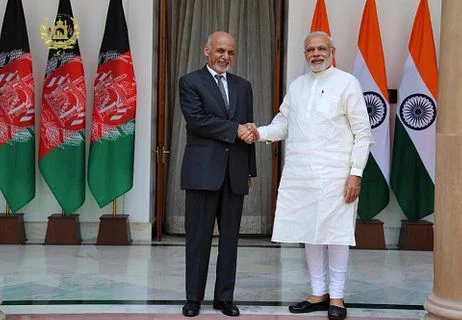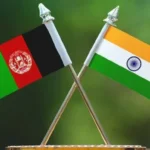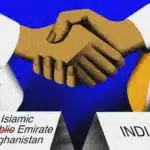Since the inception of the ambitious multi-billion dollar China-Pakistan Economic Corridor (CPEC), India has made its concerns about the flagship project of the Belt and Road Initiative (BRI) widely known. Primarily, the opposition is centered on the project’s connectivity passage, which also includes Pakistan-administered Gilgit-Baltistan and Azad Kashmir, claimed by India as its territory. To that end, the project is seen foremost by India as an infringement of its territorial sovereignty, and also on account of being a potential ‘debt trap’.
If New Delhi’s unabating statements of protest since the announcement of the initiative are any indication, they have fallen on deaf ears in Beijing. One has to recall the manner in which Sushma Swaraj, India’s former External Affairs Minister articulated her country’s stance during a bilateral meeting in 2014 with her Chinese counterpart, concluding the discussion by remarking, “Mr Minister, we support the One China policy. However, we expect you to also have a One India policy.”
Although the comment was made in a larger context of sensitive bilateral issues with China, it made abundantly clear that India was willing to exercise its diplomatic leverage to ensure that its position on sovereignty was reciprocated.
However, proposed plans of CPEC extension to third countries, such as Afghanistan, makes it apparent that China will not be deterred from pushing ahead with its broader vision.
History is witness to the long-waged covert struggle between India and Pakistan over their competing influence in Afghanistan, and the Taliban takeover of the country last year was widely interpreted as a ‘victory’ for Pakistan.
The plans for extending CPEC to Afghanistan and thereby bringing economic prosperity it promises may also have served to exacerbate hitherto unvoiced concerns in New Delhi, fueling the age-old harbored fears of the ‘threat’ Pak-Afghan region would pose to India once its economic woes are eliminated.
Convinced of Pakistan’s doctrine of ‘strategic depth’, looking the other way cannot be seen as a viable option for policy-making circles in India. Set against this backdrop, India’s cautious, albeit ingeniously calculated return to Afghanistan becomes all the more plausible; indicated by its diplomatic and media engagement with the Taliban, for whom it made its disdain no secret last year on its mainstream media circus.
In June this year, India finally reopened its embassy in Kabul after shutting it down in August last year. Moreover, Indian exports to Afghanistan climbed to $48 million in June, which had then declined to $24 million.
Despite these overtures, India has not implied recognition of the Taliban regime as yet on the cards. It is worth mentioning here that while India does not see the Taliban regime itself as a threat, but its historic ties not only with Pakistan, but dubbed “jihadi” groups by India such as Lashkar-e-Tayyiba and Jaish-e-Mohammad which lend credence to Indian apprehensions. Furthermore, India’s own economic aspirations also view Afghanistan, Central Asia and Iran as vital components, thus making India a prisoner of geography in the given scenario with Pakistan’s geopolitical presence in the region.
On the other hand is Afghanistan, for whom the stakes are greater in partaking in such an ambitious regional project, whilst being cognizant of where it stands today not only diplomatically, but economically in the global scheme of affairs. Given the humanitarian crisis that engulfs the majority of the country’s population, it is vital for the Taliban to prioritize and protect its core interests, and harbor no doubts as to the malicious intent at play right beneath the surface of normalization and engagement.
Here, a fascinating dichotomy of narratives is observed. While India expresses discomfort over content specifically targeting India, such as videos released by Al-Qaeda in Indian Subcontinent (AQIS), or publications such as Sawt-al-Hind, instigating Indian Muslims to rebel against the state, reports in Pakistan an alternative perspective.
According to Amaq News Agency, linked to the Islamic State (IS), Abdur Rehman Al Logari who was held responsible for the Kabul Airport attack which killed at least 170 civilians and 13 US Marines, had spent at least a year in Indian cities of New Delhi and Haryana before carrying out attacks for Islamic State Khorasan Province (ISKP) in Afghanistan. Another ISKP terrorist, Abu Khalid al-Hindi, who had carried out the attack targeting Sikh Gurdwara Har Rai Sahib in Kabul in March 2020, hails from the Indian state of Kerala. Regardless of whose narrative bears more weight in Afghan policy circles, the presence and activities of spoilers such as ISKP should be expected to only intensify in the wake of incoming Chinese investment. This was in fact explicit in the May issue of Khorasan Ghag, ISKP’s Pashto language-magazine.
Assessing both the evolving dynamics in the region, and how much is grievously at stake, there is wisdom in heeding with urgency, albeit carefully, to the dire need for increased Pak-Afghan interoperability in the security domain, as the future of the ‘conjoined twins’ in all likelihood will not be mutually exclusive to each other.
Also See: India’s Ingress Into Afghanistan: Why Should Pakistan Worry
Your go-to editorial hub for policy perspectives and informed analysis on pressing regional and global issues.





Add a Comment